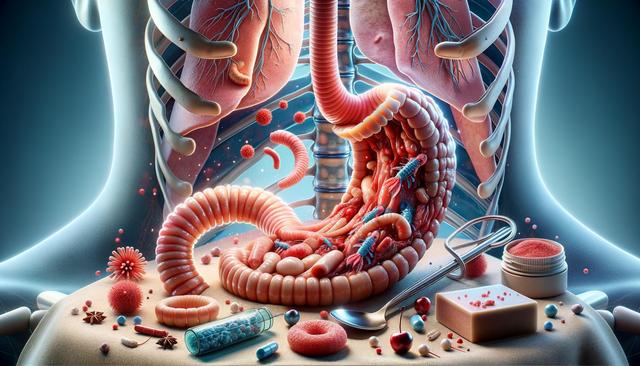Understanding Eosinophilic Esophagitis
Eosinophilic esophagitis (EoE) is a chronic immune system condition that affects the esophagus, the tube that connects the mouth to the stomach. It occurs when a type of white blood cell, called an eosinophil, accumulates in the esophagus in response to allergens, foods, or acid reflux. This buildup can lead to inflammation and damage over time. Though it may be mistaken for other gastrointestinal issues, EoE has distinct symptoms that can help in identifying the condition early. Understanding these symptoms is key, especially since they can vary significantly depending on age and severity.
The condition can affect both children and adults, and the symptoms may differ depending on the patient’s age. In younger children, feeding issues and poor growth are common. In older children and adults, difficulty swallowing and food getting stuck in the throat are often reported. These symptoms can cause significant distress and may lead to avoidance of food or changes in eating habits.
Common Symptoms in Children
In children, eosinophilic esophagitis can present in less obvious ways, often mimicking feeding disorders or allergies. Parents might notice that their child eats slowly, avoids certain textures, or complains of stomach pain. These signs can sometimes be mistaken for behavioral issues rather than a medical concern. Common symptoms in children include:
- Poor appetite or refusal to eat
- Frequent vomiting or regurgitation
- Stomach or chest pain after meals
- Feeding difficulties in infants and toddlers
- Failure to gain weight or grow at a normal rate
When these symptoms persist, it’s important to consult a healthcare provider to evaluate whether EoE might be the cause. Early diagnosis can help prevent long-term damage to the esophagus and improve the child’s quality of life.
Signs to Watch for in Teenagers and Adults
In adolescents and adults, the symptoms of eosinophilic esophagitis often become more pronounced and are typically centered around swallowing difficulties. The most commonly reported complaint is food getting stuck in the esophagus, a condition known as food impaction. Other symptoms may include:
- Difficulty swallowing solid foods (dysphagia)
- Chest discomfort or pain during eating
- Persistent heartburn not relieved by antacids
- Choking or gagging while eating
- Avoidance of certain foods or eating very slowly
These symptoms can significantly affect daily life, leading to anxiety around meals or even nutritional deficiencies due to restricted diets. If left untreated, the inflammation can cause the esophagus to narrow, making swallowing even more difficult over time.
How Symptoms Can Overlap With Other Conditions
Eosinophilic esophagitis shares symptoms with several other gastrointestinal disorders, which can make diagnosis challenging. Conditions such as gastroesophageal reflux disease (GERD), food allergies, or even anxiety-related eating difficulties can present in similar ways. This overlap often requires a detailed medical history, allergy testing, and procedures like endoscopy with biopsy to confirm the presence of eosinophils in the esophagus.
It’s not uncommon for patients to be treated for GERD for months or years before EoE is considered, especially when symptoms persist despite typical treatments. Recognizing patterns such as food avoidance, slow eating, or a history of allergies may help healthcare providers distinguish EoE from other conditions. In many cases, a multidisciplinary approach involving gastroenterologists, allergists, and dietitians is useful for accurate diagnosis and management.
When to Seek Medical Attention
If you or your child experiences persistent swallowing difficulties, chest discomfort after eating, or unexplained weight loss, it is important to consult a healthcare professional. Early detection of eosinophilic esophagitis can prevent complications such as esophageal narrowing or scarring. Some red flags to watch for include:
- Recurring episodes of food becoming stuck in the throat
- Persistent vomiting or regurgitation
- Failure to respond to standard heartburn treatments
- Noticeable avoidance of food or liquids
- Growth delays or failure to thrive in children
Timely medical evaluation can lead to a clearer understanding of the condition and appropriate interventions, such as dietary changes, medications, or allergy management plans. Since EoE is a chronic condition, ongoing monitoring and adjustments to treatment may be necessary to maintain quality of life and prevent long-term damage.
Conclusion: Recognizing the Signs for Better Outcomes
Eosinophilic esophagitis can be a challenging condition to live with, especially when symptoms are not properly identified. Whether in children who struggle to eat and grow or adults dealing with painful swallowing and food avoidance, early recognition and diagnosis are essential. Understanding the wide range of symptoms, from subtle feeding issues in toddlers to severe food impaction in adults, allows families and individuals to seek help sooner. By becoming aware of the signs and working closely with healthcare providers, individuals affected by EoE can find relief and improve their eating experience, ultimately enhancing their overall well-being.


